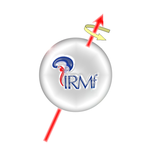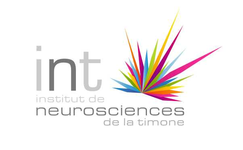A Monthly Neuroimaging Meeting took place on Thursday 13 November from 10:00 to 12:00 in the conference room of CERIMED (access map). The program included two external speakers:
- 10:00: Gregor Thut (directeur adjoint, CERCO, Toulouse) jointly invited by the Institut de Neurosciences des Systèmes: “Human brain oscillations for perception and attention: A mosaic of perceptually relevant rhythms is concealed in the “canonical” alpha band” Download the pdf (4Mo)
Brain oscillations in the alpha-band have been linked to attention and perception. In particular, decreases in posterior alpha-amplitude have been thought to reflect activation of perceptually relevant brain areas for visual target engagement, while increases in alpha-amplitude have been associated with inhibition for distractor suppression. Traditionally, these alpha changes have been viewed as two facets of the same process. However, more recent evidence calls for revisiting this interpretation. This talk will cover recent research using EEG, combined TMS&EEG and combined MEG&EEG aiming for a mechanistic account of alpha-oscillations in sensory evidence accumulation. The data show that there is a multitude of alpha-oscillations within the canonical alpha-band that will need to be dissociated for a refined understanding of their roles in perception and attention. - 11:00: Minye Zhan (Institut du Cerveau et de la Moelle, Paris): “The challenges of high-resolution fMRI: facing the broken assumptions at lower resolutions” Download the pdf (9Mo)
With the increasing numbers of MRI scanners at 7T and higher, more and more fMRI research pushes toward sub-millimeter resolution, switching the spatial scale from macroscale to mesoscale, although with limited brain coverage. With whole-brain coverage, high-field studies with supra-millimeter resolution (1 to 1.8 mm isotropic) enjoy a boost in image contrast, (t)SNR and effect size, and increased statistical power. For those whole-brain scans, traditional analyses for low-resolution fMRI are still being widely applied, however a lot of assumptions underlying those analyses were actually broken for high-resolution fMRI. In this presentation, I will list the assumptions for low-resolution fMRI and their origins, and will use our 7T bilingual study as an example to demonstrate how each assumption is broken. The high-resolution fMRI analysis at 7T and higher fields need additional considerations and alternative statistical methods compared to traditional low-resolution fMRI.


